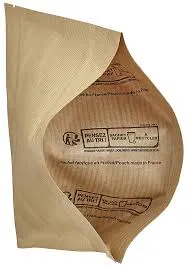- Afrikaans
- Albanian
- Amharic
- Arabic
- Armenian
- Azerbaijani
- Basque
- Belarusian
- Bengali
- Bosnian
- Bulgarian
- Catalan
- Cebuano
- chinese_simplified
- chinese_traditional
- Corsican
- Croatian
- Czech
- Danish
- Dutch
- English
- Esperanto
- Estonian
- Finnish
- French
- Frisian
- Galician
- Georgian
- German
- Greek
- Gujarati
- haitian_creole
- hausa
- hawaiian
- Hebrew
- Hindi
- Miao
- Hungarian
- Icelandic
- igbo
- Indonesian
- irish
- Italian
- Japanese
- Javanese
- Kannada
- kazakh
- Khmer
- Rwandese
- Korean
- Kurdish
- Kyrgyz
- Lao
- Latin
- Latvian
- Lithuanian
- Luxembourgish
- Macedonian
- Malgashi
- Malay
- Malayalam
- Maltese
- Maori
- Marathi
- Mongolian
- Myanmar
- Nepali
- Norwegian
- Norwegian
- Occitan
- Pashto
- Persian
- Polish
- Portuguese
- Punjabi
- Romanian
- Russian
- Samoan
- scottish-gaelic
- Serbian
- Sesotho
- Shona
- Sindhi
- Sinhala
- Slovak
- Slovenian
- Somali
- Spanish
- Sundanese
- Swahili
- Swedish
- Tagalog
- Tajik
- Tamil
- Tatar
- Telugu
- Thai
- Turkish
- Turkmen
- Ukrainian
- Urdu
- Uighur
- Uzbek
- Vietnamese
- Welsh
- Bantu
- Yiddish
- Yoruba
- Zulu
pet vs pe
The Debate PET vs PE – Which Plastic Should We Favor?
In today's world, the environmental impact of plastics is a topic of significant concern. Among the various types of plastics, polyethylene terephthalate (PET) and polyethylene (PE) are frequently discussed. Both PET and PE are widely used in various applications, but their properties, environmental effects, and potential for recycling often spark debate. This article aims to highlight the key differences between these two materials and examine which one we should favor in our efforts to create a more sustainable future.
Properties and Applications
PET, a polyester, is primarily known for its strength, thermal stability, and clarity. It is most commonly used in the beverage industry for bottles, thanks to its ability to preserve the quality of liquids while preventing gas from escaping. In addition to beverages, PET is also utilized in textiles, films, and packaging materials. Its durability and resistance to chemicals make it suitable for a variety of uses.
On the other hand, PE is a simple polymer that comes in various forms, such as low-density polyethylene (LDPE) and high-density polyethylene (HDPE). PE is known for its flexibility, toughness, and excellent chemical resistance, making it a favorite for packaging films, grocery bags, containers, and toys. HDPE, in particular, is appreciated for its rigidity and strength, often being used for milk jugs and cleaning product bottles.
Environmental Impact
When assessing the environmental impact of both materials, it becomes essential to consider their lifecycle. PET has an advantage when it comes to recycling. It is one of the most commonly recycled plastics worldwide, with a recycling rate that has steadily increased over the years. The recycling process for PET is well-established, enabling it to be transformed into new products, such as clothing fibers and new bottles. However, the energy required to produce virgin PET is significant, and if not recycled, it can contribute to plastic pollution.
pet vs pe

Conversely, PE poses challenges in terms of recycling, as its recycling rates are generally lower compared to PET. While technically recyclable, many curbside recycling programs do not accept certain PE products, such as plastic bags and film, leading to increased landfill contributions. Furthermore, the degradation of PE takes much longer than PET, exacerbating pollution concerns.
Sustainability Initiatives
Both PET and PE producers are increasingly aware of their environmental impacts and are implementing sustainability initiatives. For PET, advancements in chemical recycling technologies are emerging, allowing for a greater percentage of plastic to be recycled continuously without diminishing quality. Brands are also exploring bio-based PET sourced from renewable materials, reducing reliance on fossil fuels.
Permeating the market, efforts to develop biodegradable variants of PE are gaining momentum. These alternatives aim to address the persistent issue of plastic waste in our environment. Moreover, companies are investing in closed-loop systems that encourage the return and recycling of used products.
Conclusion
In the debate of PET vs PE, both materials carry environmental consequences and benefits. PET has a more established recycling framework, thereby posing less risk of environmental degradation when properly managed. Meanwhile, PE offers versatility and durability but struggles with lower recycling rates and persistence in nature when improperly disposed of.
Ultimately, the choice between PET and PE should not be viewed solely in terms of which material is better. Instead, it should be part of a broader conversation about our collective responsibility as consumers and producers to minimize plastic usage, support recycling programs, and invest in innovative solutions that prioritize sustainability. The way forward involves not only choosing the right materials but also fostering a culture of responsible consumption and waste management. In doing so, we can strive towards a future where our reliance on plastics does not compromise the health of our planet.













